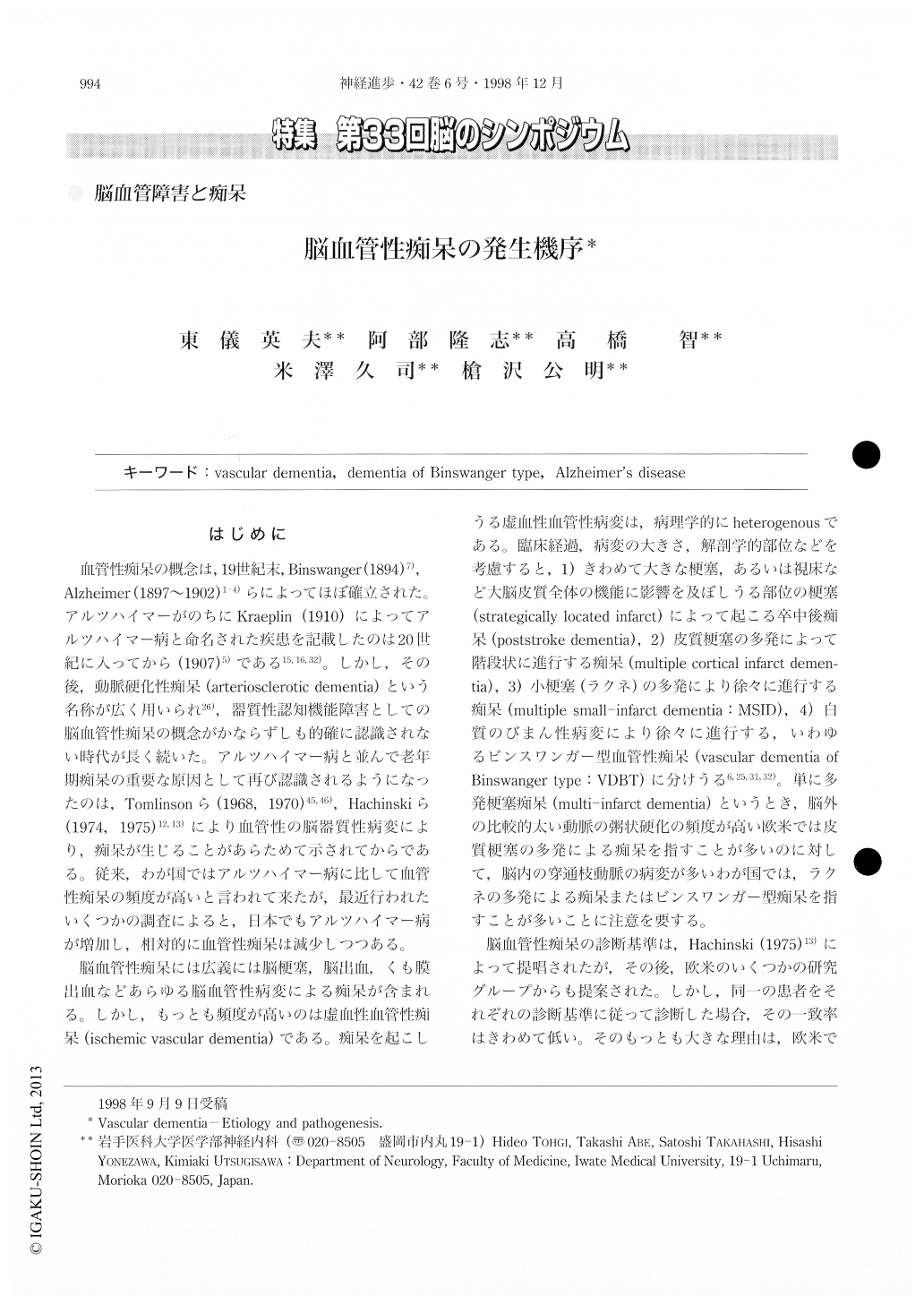Japanese
English
- 有料閲覧
- Abstract 文献概要
- 1ページ目 Look Inside
はじめに
血管性痴呆の概念は,19世紀末,Binswanger(1894)7),Alzheimer(1897~1902)1-4)らによってほぼ確立された。アルツハイマーがのちにKraeplin(1910)によってアルツハイマー病と命名された疾患を記載したのは20世紀に入ってから(1907)5)である15,16,32)。しかし,その後,動脈硬化性痴呆(arteriosclerotic dementia)という名称が広く用いられ26),器質性認知機能障害としての脳血管性痴呆の概念がかならずしも的確に認識されない時代が長く続いた、,アルツハイマー病と並んで老年期痴呆の重要な原因として再び認識されるようになったのは,Tomlinsonら(1968,1970)45,46),Hachinskiら(1974,1975)12,13)により血管性の脳器質性病変により,痴呆が生じることがあらためて示されてからである。従来,わが国ではアルツハイマー病に比して血管性痴呆の頻度が高いと言われて来たが,最近行われたいくつかの調査によると,日本でもアルツハイマー病が増加し,相対的に血管性痴呆は減少しつつある。
Pathological backgrounds for ischemic vascular dementia (IVD) are considerably heterogeneous. Taking account of clinical course, lesion size and anatomical location, IVD may be classified as 1) poststroke dementia of acute onset associated with an infarct that is large enough or strategically located to impair general cognitive function ; 2) multiple cortical infarct dementia that develops incrementally with increasing number of cortical infarcts ; 3) multiple small infarct or lacunar dementia (MSID) that develops progressively ;

Copyright © 1998, Igaku-Shoin Ltd. All rights reserved.


